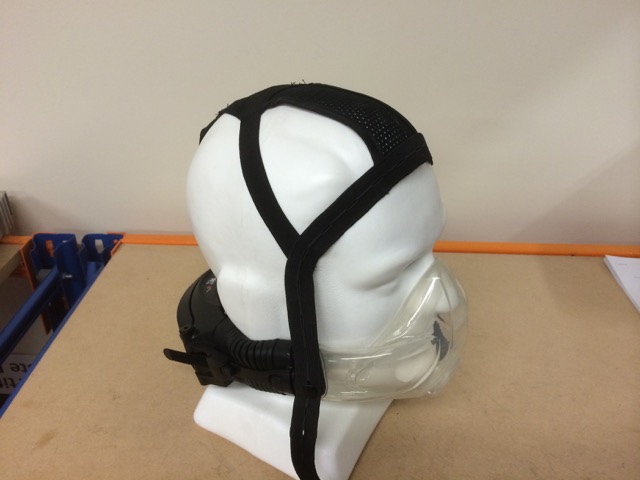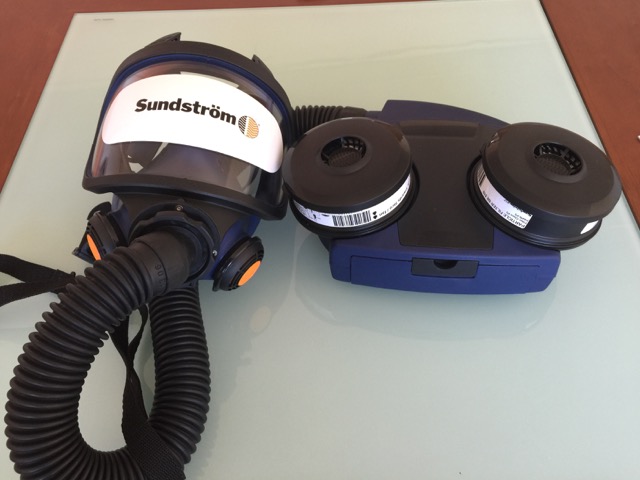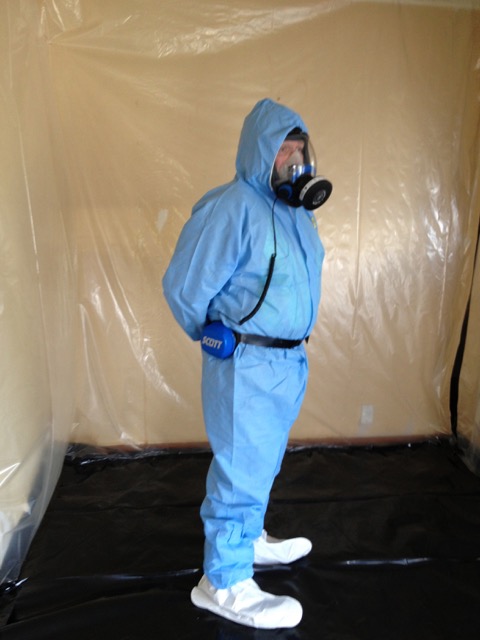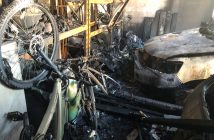
Selecting the correct personal protective equipment is vital under the new asbestos regulations says asbestos removal expert Ian Napier.
Personal protective equipment (PPE) is always crucial to safety and well-being – and nowhere more so than when it comes to asbestos.
That’s why new legislation was introduced on 4 April and contains punitive sanctions for those who do not supply or wear such equipment.
The new rules require that an employer cannot apply costs against the employee for asbestos PPE – it must be supplied to all employees where needed free of charge.
There are several elements to correct asbestos PPE, the most important of which is the respirator. The minimum type of respirator that should be worn by those working with hazardous dusts is a P2 respirator with a P3 Filter. A P2 respirator can be either a half mask or a full-face mask.
The type of filter must be a particulate filter for capturing fibres. There are also filters for chemicals gases and biological hazards.
The respirators themselves can be paper-moulded, silicone or rubber half masks; negative air pressure full-face masks; positive-air, full-face masks; and supplied air hoods.
My opinion is that paper half masks shouldn’t be worn when dealing with asbestos as they have severe limitations. Firstly, the respirator should be fit-tested to your face and should only be used by the operator that has been fit-tested with it. It should not be shared.
Secondly, fit-testing a paper mask each day and replacing them is horrifically expensive. Plus they do not provide a good seal against the face. A good test is to put on a pair of safety glasses and breath heavily. If the glasses fog up, you have a problem. I call these psychological masks because you think you’re safe but you may not be.
If you’re working in a closed environment, which most asbestos removalists do, then you should wear a positive air-supplied respirator. This would be seen as taking all reasonable steps to provide safety to employees, coupled with the fact that breathing is easier with no fogging. Some people prefer to wear full-face negative respirators, which is their prerogative.
If, however, you are doing short duration visits or working outside then a face-fitted silicone half-mask respirator would suffice. The benchmark for working inside is approximately 20 to 30 minutes. However, there is no law that states this length of time.
Maintenance
It is vitally important that the respirator be kept in top condition as they are tested by the manufacturer to ensure they meet specific standards.
Don’t break the seals around the visor as this will void the certification and could pose a health risk. If the respirator does require a visor replacement then the user will need to undertake a fit test to prove respirator effectiveness.
Respirators should be inspected and self-tested every time they are worn to prove their effectiveness. Filters should be changed regularly. There is no set time when to change the filter but if it is dirty clogged or grey then it obviously should be changed.
The respirators should be cleaned with a solution at the end of the day and stowed dry. This is extremely important as the filter is contaminated once it has been used.
If you are going to use the same filter on several projects, ensure the filter is capped so it doesn’t contaminate the inside of the respirator. Don’t return the mask to stowage with the filter exposed.
Fit-testing
It is important that respirators be fit-tested by using either a qualitative or quantitative fit-test system – the latter is best. This method uses a device to test the surrounding environment against the air being supplied to the user, and produces a digital read-out for the user’s records.
Please note that respirators are of no value if you have facial hair. In addition, some respirators will not fit certain face shapes so it’s important that you purchase a mask suitable for your face.
Generally they come in small or medium/large. Silicone is better than rubber and surgical silicone is best of all. If you lose or gain weight or suffer scarring or facial injuries you will need to be fit-tested again.
Overalls
You should only wear type 5/6 disposable overalls when working with asbestos. Robust non-disposable types can be worn but they are very hot to work in.
The most common overall is the disposable type. Ensure your overalls are certified to the above standard. When putting on overalls make sure you put the hood over your respirator harness.
Also go for bigger sizing even if you look foolish. This will allow plenty of room to move around and stretch without causing damage to the seams or zips. Always go with a zipper that has a tape flap which covers the zip and sticks onto the opposite side.
Overboots
These should be of the same type as the overalls. Some have just a paper sole while others have a more robust undersurface – these are great for protecting footwear. If, however, you don’t want to wear disposable overboots then wear either gumboots or non-lace-up boots which can be easily cleaned.
Gloves
Two types of gloves are usually worn – either the thin nitrile type or the thicker rubber-impregnated material gloves. Thicker gloves are better as the nitrile gloves are easily damaged when scraping or removing asbestos-contaminated materials (ACMs).
If using the thicker, longer-lasting gloves you will need to ensure these are packaged up as contaminated. The new Asbestos Regulations spell out rules regarding contaminated PPE and how it should be disposed of.
Removing contaminated PPE
The correct method for removing your overalls and other PPE is to get your partner to vacuum the overalls on your body using an approved H class vacuum cleaner (This is done in the work area).
Then apply a water spray from a typical garden sprayer over the PPE. Enter the first chamber of the decontamination pod and either shower down with the overalls on or spray yourself down again.
DO NOT REMOVE YOUR RESPIRATOR. Remove the overalls inside out, roll them off your body and then place gloves, overalls and boot covers into a waste bag.
Enter the shower area and shower down before moving to the next pod and removing your respirator. Clean this and allow it to dry. Now you can enter next the next pod for a further shower or dry-off and the put clean clothing on before exiting into the environment.
Decontamination can also be affected by entering a clean area with contaminated clothing which has undergone first-stage cleaning before putting on a clean pair of disposable overalls over the top of the contaminated ones before entering the decontamination unit for full decontamination.
Finally, remember that waste water must be captured and filtered before disposal. Waste should be disposed of using minimum 200 micron polythene bags and should be double-bagged to ensure no leakages occur. This means a minimum 400 micrograms.
Some suppliers offer 125 micron polythene bags, reasoning that doubling the layer will reach the recommended 200 micrograms. In effect to reach 400 micrograms it would need to be doubled again.
Waste also needs to be labelled before it is transported to landfill. Don’t forget that if you exceed 50 kilograms of waste you will need a class 9 licence label on the vehicle or trailer.
Following these simple instructions will ensure that everyone on-site comes home safe and sound after working with asbestos, which is what the government’s new asbestos regulations are aiming to achieve.
Ian Napier is Director of Asbestos Removal Equipment NZ Ltd, the largest asbestos removal company in New Zealand



